To celebrate English Tourism Week we have created our Top 10 Tourist Attractions in the City to help inspire you to pay us a visit.
1. Smeaton’s Tower 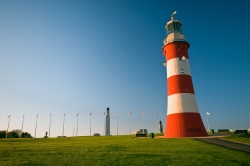
A centerpiece on Plymouth's Hoe, Smeaton's Tower has become one of the South West's most well-known landmarks.
The lighthouse was originally built on the Eddystone reef in 1759 at a cost of £40,000, but was taken down in the early 1880s when it was discovered that the sea was undermining the rock it was standing on.
Approximately two thirds of the structure was moved stone by stone to its current resting place on the Hoe. Now standing at 72 foot high, Smeaton's Tower offers fantastic views of Plymouth Sound and the city from its lantern room which, along with the rest of the building, has been painstakingly restored to its original glory.
2. Plymouth Gin Distillery 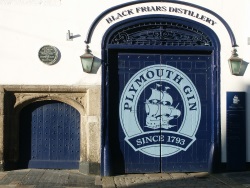
Black Friars Distillery, the working home of Plymouth Gin since 1793, is the oldest working gin distillery in England and is situated in the Barbican.
The building dates back to the early 1400’s with the oldest part of the building – the Refectory, a medieval hall with a fine hull-shaped timber roof, dating back to 1431.
Take a guided tour and learn about the art of making the world-famous Plymouth Gin, enjoy a tutored tasting of the range and then relax in the Refectory cocktail lounge – the ultimate place to enjoy a cocktail and where the Pilgrim Fathers are said to have spent their last night before setting sail in the Mayflower to the New World.
3. National Marine Aquarium .jpg)
The National Marine Aquarium (NMA) is the UK's largest Aquarium. Be amazed by a fascinating underwater world and learn how we all play a part in conserving it.
The National Marine Aquarium is a registered charity committed to promoting a sympathetic understanding of the sea through programmes of education, conservation and research. Your journey will take you across the world's oceans, from the shores of Plymouth to the coral reefs of the tropics.
The NMA is home to over 70 sharks from more than ten different species. The sharks on display range in size from the small catfish to the large Sand Tiger Sharks.
They host an action-packed event schedule, including their ‘not-to-be-missed’ interactive dive shows. The National Marine Aquarium is a truly unique venue in the stunning Sutton Harbour.
Its relaxed environment and breathtaking views make it the perfect venue for a variety of functions and events.
4. Mayflower Steps 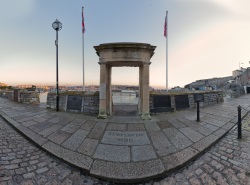
The Mayflower Steps are close to the site in the Barbican, from which the Pilgrim Fathers are believed to have finally left England aboard the Mayflower, before crossing the Atlantic Ocean to settle in North America on 6 September 1620.
The Mayflower Steps are flanked by the British and American flags and mark the final English departure point of the 102 passengers.
The actual steps the pilgrims left from no longer exist. A granite block bearing the ship’s name marks the approximate site, while a tablet commemorating the voyage was erected alongside in 1891.
5. Royal William Yard .jpg)
Designed by Victorian architect Sir John Rennie and constructed between 1825 and 1831, Royal William Yard is steeped in history. Considered to be one of the most important groups of historic military buildings in Britain, it is also the largest collection of Grade 1 listed military buildings in Europe.
The Royal William Yard today is a thriving hub for many Plymouth businesses and retailers. The Yard is one of Plymouth’s premier lifestyle destinations with regular public events taking place including outdoor theatre productions, open-air cinema and arts and crafts markets.
Accessible by land and sea, the Yard has its own harbour with mooring facilities and Royal William Yard’s own ferry service, which makes regular daily trips from the Yard to the Barbican Landing Stage and back.
Visitors to the Yard can explore a multitude of independent retailers, restaurants and lounge bars.
6. The Royal Citadel 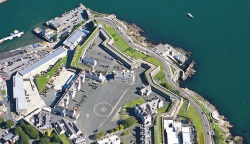
The Royal Citadel is a dramatic 17th century fortress built to defend the coastline from the Dutch, and keep watch on a recently rebellious town. It is still in use today as an operational military establishment.
It is at the eastern end of Plymouth Hoe overlooking Plymouth Sound, and encompasses the site of the earlier fort that had been built in the time of Sir Francis Drake.
The Royal Citadel was the most important English defence for over 100 years, with 70 ft high walls, and was regularly strengthened over the years, particularly during the 1750s when it was equipped with 113 guns.
In 1860, the Royal Commission on the Defence of the United Kingdom recommended the construction of a new ring of forts to defend Plymouth from a greater distance, the "Palmerston Forts"; however, the Citadel was still judged to be '...a valuable support to the works on the right of the "North-Eastern Defences". During the Second World War, the Citadel was used as the headquarters of the Coast Artillery Training Centre, Plymouth.
After the war, the Coast Artillery School moved there from Llandudno, and the two institutions merged with the one remaining regular coast artillery regiment (47th Coast Regiment), which relocated to Plymouth from Dover.
Tours of this historical site take place throughout the year.
7. Mount Edgcumbe Country Park 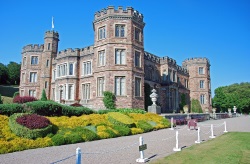
Mount Edgcumbe House is the former home of the Earls of Mount Edgcumbe. Set in Grade I Cornish Gardens within 865 acres Country Park on the Rame Peninsula, South East Cornwall.
Mount Edgcumbe House was first built in the 1500s and was restored after World War Two. It is jointly owned by Cornwall Council and Plymouth City Council and is one of the regions most popular historic tourist destinations.
The wider park is open all year round from 8am to dusk and is free to the public.
8. Gaia Spa .jpg)
Gaia Spa is a new, luxury spa set within the grounds of Boringdon Hall, a Grade I listed 16th century country manor house hotel, on the edge of Dartmoor, near Plymouth.
The 5-star Boringdon Hall Hotel features fantastic historic interiors and elegant rooms.
Gaia treatments have been created to meet the varied needs of modern individuals, using effective natural ingredients and highly skilled therapeutic techniques. Using both Espa products and their own Gaia range.
9. Mayflower Museum 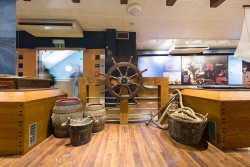
The Mayflower Museum, set over three floors explores the story of the voyage of the Pilgrim Fathers and their journey aboard the Mayflower to the New World.
The journey of discovery begins by stepping onto the balcony on the top floor to enjoy fantastic panoramic view of todays' busy Barbican and harbour.
The story of the Mayflower Pilgrims is an enduring tale of courage in the face of adversity. Though these early settlers of the New World play a significant role in America's past, they left their mark in Plymouth too. These early religious refugees, who sailed into Plymouth by chance, were only in port for a few days.
Open all year round, the Mayflower Museum also houses the Tourist Information Centre who are always on hand to provide more information.
10. Theatre Royal 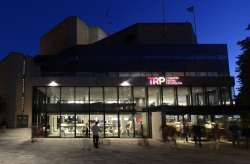
The Theatre Royal Plymouth is the largest and best attended regional producing theatre in the UK and the leading promoter of theatre in the South West.
It serves the South West with a wide range of theatre including classic and contemporary drama, musical productions and the presentation of national opera, ballet and dance companies.
It also specialises in the production of new plays and has built a national reputation for the quality of its innovative work.
There are three distinctive performance spaces: The Lyric, The Drum and the workshop space, The Lab
View the ‘stars’ located in the stone path surrounding the Theatre Royal on Royal Parade.
Comments
Klara Johansen In general, in order to be able to convey information about places of interest, it is necessary to understand the wishes of visitors and prepare a high-quality presentation of these places. I also take these requirements into account when developing a presentation, pitch deck tips https://slidepeak.com/blog/perfect-pitch-deck-design You should also keep consistency in mind, as this is important when using design elements such as headers, footers, and style icons. Berry Can I find it here https://www.google.com/ ?


 to add an item to your Itinerary basket.
to add an item to your Itinerary basket.


.jpg)



